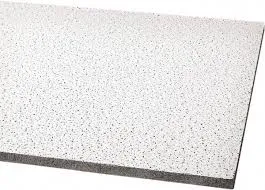- Afrikaans
- Albanian
- Amharic
- Arabic
- Armenian
- Azerbaijani
- Basque
- Belarusian
- Bengali
- Bosnian
- Bulgarian
- Catalan
- Cebuano
- Corsican
- Croatian
- Czech
- Danish
- Dutch
- English
- Esperanto
- Estonian
- French
- German
- Greek
- Hindi
- Indonesian
- irish
- Italian
- Japanese
- Korean
- Lao
- Malay
- Myanmar
- Norwegian
- Norwegian
- Polish
- Portuguese
- Romanian
- Russian
- Serbian
- Spanish
- Swedish
- Thai
- Turkish
- Ukrainian
- Uzbek
- Vietnamese
nov. . 12, 2024 08:44 Back to list
ceiling tile clip
The Importance and Functionality of Ceiling Tile Clips
In modern architecture and interior design, the ceiling is often a neglected aspect of a room, yet it plays a crucial role in defining the space's ambiance and functionality. One of the most significant innovations in ceiling design over the past few decades has been the development and use of ceiling tiles. These tiles provide aesthetic appeal, acoustic comfort, and insulation, but just as important are the accessories that help maintain their integrity and usability. Among these accessories, ceiling tile clips are indispensable.
What Are Ceiling Tile Clips?
Ceiling tile clips are small, yet crucial hardware components designed to secure ceiling tiles in place within a grid system. They come in various shapes and sizes, depending on the type of ceiling tiles used and the grid structure in which they are installed. Generally made from durable materials such as metal or high-quality plastic, these clips ensure that ceiling tiles remain stable and do not sag or fall out of the grid.
The Functionality of Ceiling Tile Clips
The primary function of ceiling tile clips is to hold tiles firmly in place, preventing movement and potential damage. Over time, even the best-installed ceiling tiles can shift or become loose due to factors like temperature fluctuations, humidity, or structural settling. Ceiling tile clips counteract these issues by providing a secure connection between the tiles and the supporting grid, ensuring that even in adverse conditions, the ceiling remains visually appealing and functional.
Moreover, ceiling tiles often incorporate acoustic properties to manage sound within a space. Properly secured tiles help maintain these acoustic benefits as any movement can result in gaps that allow sound leakage. Similarly, many ceiling tiles offer thermal insulation properties; thus, ensuring they are well-secured helps maintain energy efficiency by keeping conditioned air within a space.
ceiling tile clip

Installation Benefits
The installation of ceiling tile clips is a straightforward process that can be completed by both professional contractors and DIY enthusiasts. These clips generally do not require specialized tools and can be easily affixed before or during the installation of the ceiling tiles. By using clips, installers can save time and effort when placing tiles, as securing them becomes a quicker task compared to relying solely on gravity or adhesive substances, which can take longer to set.
Additionally, ceiling tile clips facilitate easier maintenance and access to the ceiling space. If a tile needs to be replaced or repaired, the clips allow for swift removal without causing damage to adjacent tiles. This is particularly advantageous in commercial settings where maintenance needs to be handled expeditiously to minimize disruption.
Aesthetic Considerations
Beyond functionality, ceiling tile clips can contribute to the overall aesthetic of a ceiling installation. With the right choice and careful placement, these clips can be virtually invisible, allowing the beauty of the ceiling tiles to shine. In cases where clips are visible, some manufacturers design them to blend seamlessly with various tile styles and colors, ensuring that the aesthetic appeal remains intact.
Conclusion
In conclusion, ceiling tile clips serve as an essential component of modern ceiling installations. Their role in securing tiles, enhancing acoustic and thermal performance, simplifying installation and maintenance, and maintaining aesthetic integrity cannot be understated. As the architectural landscape continues to evolve, the importance of such seemingly minor components will remain significant in creating spaces that are not only visually enjoyable but also practical and efficient. Whether you are an architect, builder, or homeowner, understanding the value of ceiling tile clips is vital for achieving the best outcomes in ceiling design and functionality. Ultimately, the right choice in ceiling tiles paired with quality clips ensures a harmonious balance between form and function, elevating any room’s design.
-
Transform Interiors with PVC Gypsum Ceiling: A Stylish, Durable, and Moisture-Resistant SolutionNewsMay.19,2025
-
The Smart Interior Upgrade: Discover the Durability and Versatility of Gypsum Ceiling Access Panel SolutionsNewsMay.19,2025
-
The Smart Choice for Interior Design: Discover the Value of PVC Gypsum Ceiling SolutionsNewsMay.19,2025
-
Mineral Fiber Ceiling Tiles: The Smart Blend of Performance and AestheticsNewsMay.19,2025
-
Mineral Fiber Ceiling Tiles: The Superior Choice Over Gypsum for Sound and Fire SafetyNewsMay.19,2025
-
Mineral Fiber Ceiling Tiles: Eco-Friendly Strength and Style for Every CeilingNewsMay.19,2025







